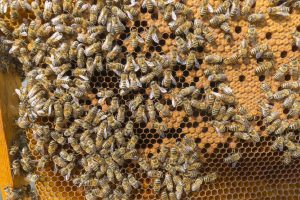Charlie Koenen, once thriving in the computer business, found himself drawn into a different world—the world of bees. Transitioning from tech to agriculture, Koenen has gained a passion for bees and also being an advocate for pollinator awareness.
Driven by a quest to change traditional beekeeping methods, Koenen delved into industrial design to reinvent beehives. After nine years of innovation, he unveiled a new design—a horizontal hive. This hive reduces the hive’s weight and disruption to the bees’ habitat.
His unique approach to beekeeping extends beyond personal interest. Koenen has placed hives in unconventional locations across Milwaukee, such as nursing homes, schools, and community hubs, challenging the stereotype of beekeeping in urban spaces.
Reflecting on the challenges of beekeeping in urban settings, he emphasized the importance of community engagement, local regulations, and neighborly relationships. His advocacy extended to the drafting of city ordinances governing beekeeping.
He says, “Recognizing the evolving demands and hazards facing beekeepers, particularly in an era of environmental threats and unpredictable weather patterns is important. If you want to be a beekeeper in your area, you need to know what you’re getting into.”
Beyond the physical labor of beekeeping, Koenen’s focus shifted toward advocacy, education, and empowering others to appreciate and protect pollinators. His efforts paved the way for collaborative initiatives, from placing bees on university rooftops to engaging with homeless populations through beekeeping education programs.
“I will continue challenging norms, and inspiring others to see beekeeping as more than just harvesting honey,” says Koenen. “It’s about nurturing a delicate ecosystem and fostering a deeper connection with nature.”


